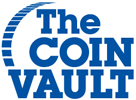Research shows that having a hobby is beneficial in helping eliminate one’s stress while also building confidence and creativity. Well, what if we told you you could have a chance at all of that while also learning history and geography while merging the old with the new? To be curt, that is exactly what coin collecting can do.
In our last blog in this Young Collector series, we talked about how coin collecting and the numismatic hobby itself nine times out of ten is a generational pass down. While physical coins and currency sure do make it easier to start out, the knowledge that accompanies them can sometimes mean even more. We all know the saying “the more you learn, the more you know”, right? It applies here and then some.
In the book Coin Collecting For the Next Generation by Kevin Flynn, a short essay was written by Kenneth Bressett entitled “Numismatics and Education.” Bressett, a well-known American numismatist and a lifelong promoter of the study and hobby of numismatics, goes on to describe that as a child, he came into the world that was coin collecting around the fourth grade. He goes on to explain that initially the excitement of making money so easily was a major incentive. He then goes on to explain that with age, he realized “the value of old coins was not in their commercial worth, but rather in the information they could impart and the way they could bring to life other cultures and visions of the past.”
Education overall is a major advantage in life, but especially in the coin hobby. Of course, you need it to appropriately know how much you should or should not pay for something or how much to sell it for so you and the person on the other end both leave feeling happy about the transaction, but the overall history of United States coinage far exceeds the money you have the “potential” to make.
Think about it: most if not all the coins you see on our show or at a local coin shop are jam-packed full of history. Where did it come from? Who could have owned this? Who designed the coin and why? The reason can more generally be found in any history book and that is pretty incredible.
For example, the Jefferson War Nickels. While World War II was raging overseas, the United States was doing everything it could to support the war efforts. This included rationing commodities and nickel was one of them as it was used for armor plating. After Congress decided to order the removal of all nickel from the five-cent pieces, they were made up of an alloy of copper, silver, and manganese. This lasted from 1942 to 1945 and the design remained the same. To combat the complete removal of all Jefferson Nickels in circulation due to the end of the war, the Mint decided to make them distinguishable by making the mint marks very large atop the design on the reverse.
The moral of the Jefferson Nickel example above? They are usually worth more than other year-dated Jefferson Nickels because of their composition, their limited nature, and the history (or the who/what/where/why) that follows it. Once again, the more you know, the better off you will be.
So gear up youngsters: now is the time to get SMART about the coin collecting hobby! Knowledge is power! Start collecting now. Start learning and listening now. Just START NOW!
